
Lot 147

ORIGINAL PAINTINGS COMMISSIONED FOR A PRINTED POSTER ENTITLED 'THE LIFE STORY OF THE REVERED GANDHIJI' PUBLISHED BY HEMCHANDER BHARGAVA, DELHI
BY LAXMILAL NANDLAL NATHDWARA, INDIA, CIRCA 1948

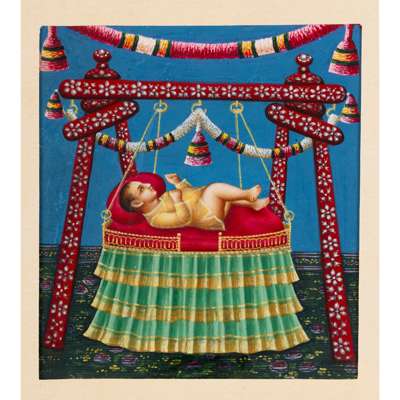
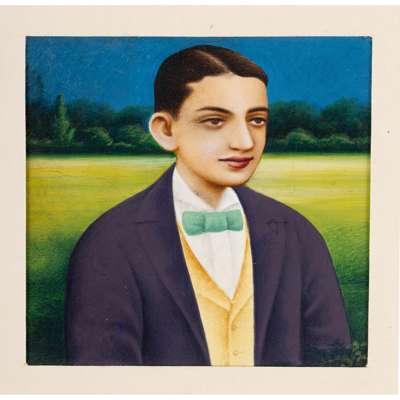
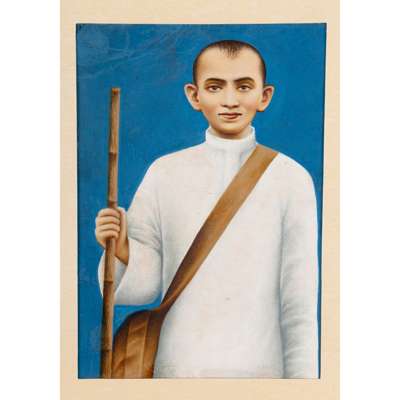

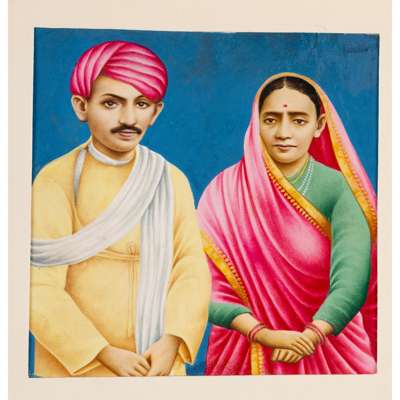
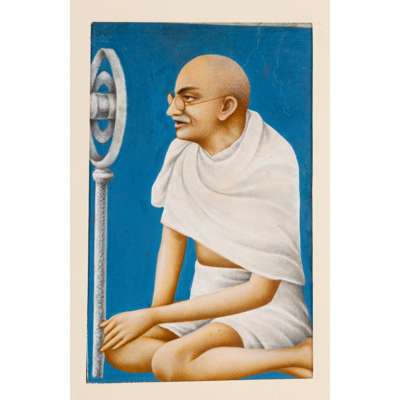
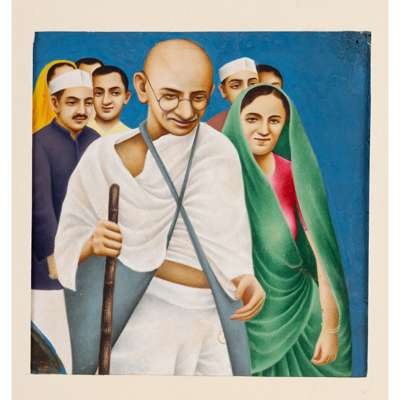
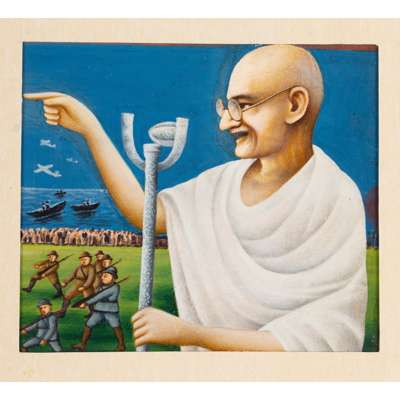
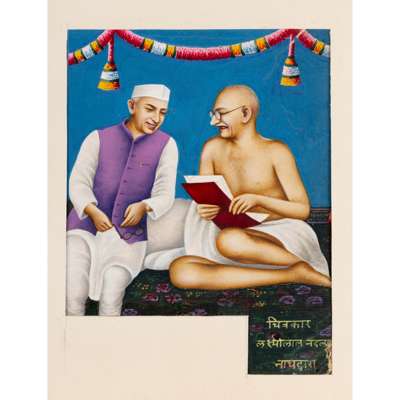












Auction: 11 June 2025 from 10:00 BST
Description
gouache on card, comprising 10 small-sized paintings, one signed by the artist, depicting the life of Gandhi, from a baby depicted in a Krishna-style presentation crib, to his early and later education dressed in a suit, his marriage, his time in South Africa, when he reached India, his change of dress, his peaceful marches, his speeches, his wisdom (10)
Dimensions
15.1cm x 15.5cm largest
Provenance
Bonhams, India in Books, Photography, Maps and Manuscripts, 13 October 2006, lot 429.
Private UK Collection.
Footnote
Created at an important moment in history these 10 original paintings were commissioned by publishers Hemchander Bharagava & Co of Delhi to form part of a dramatic biographical poster. “Poojya Gandhiji ki Jivan Caritra” or “The Life Story of Revered Gandhiji”, leads the viewer through the important events of Ghandi’s life culminating in his assassination. The story, told through each piece of art, commences in the bottom left-hand corner and moves vertically up the left-hand side of the poster before traversing horizontally and then down the right-hand side. Leading the viewer through his education and his arrival in South Africa, the poster then charts Ghandi’s journey back to India where he engages with key domestic issues before formulating his campaign of non-violent protests. Whilst the latter part of the story focuses on Ghandi’s campaign for Britain to quit India the dominant image is of his assassination which is placed front and centre to directly engage the viewer.
These paintings provide a rich visual biography which need to be considered against the dramatic political change of the period. In 1947 India was partitioned along religious lines to create the two independent states of India and Pakistan. This division displaced millions of people creating a refugee crisis, violence and large-scale loss of life. 6 months later Ghandi was shot dead in New Delhi on 30th January 1948. These events created turmoil and uncertainly in a country which had only just begun to realise its freedom. At a time when there was no television and radio was only just starting to make inroads, print makers took a lead in visual communication. As a result, these prints would have been highly prized, passed from hand to hand or displayed proudly in homes. It is also likely that they were affixed to walls, doors, or poster boards in public areas. They were meant for large scale communication but not designed to last. Gandhi figured prominently in these prints and whilst not a religious character he was often portrayed within the ranks of the divine depicted alongside Budda and Jesus. Artists also borrowed heavily from Catholic theology suggestingthat the dripping blood, as seen within this poster design, represents Ghandi’s absorption into the blood stream of the nation. Ghandi’s identity was thus inextricably linked to India and vice versa. Artists also sought to portray a safe future for India.
Whilst little is known about the artist of these artworks, Laxmilal Nandlal from Nathdwara, undoubtedly was a classically trained artist who was favoured by the publishing company Hemchander Bhargava & Co., for he went on to create a similar style biographical poster of Nehru, and also painted Indian deities, such as Lord Shiva and Parvati.





















